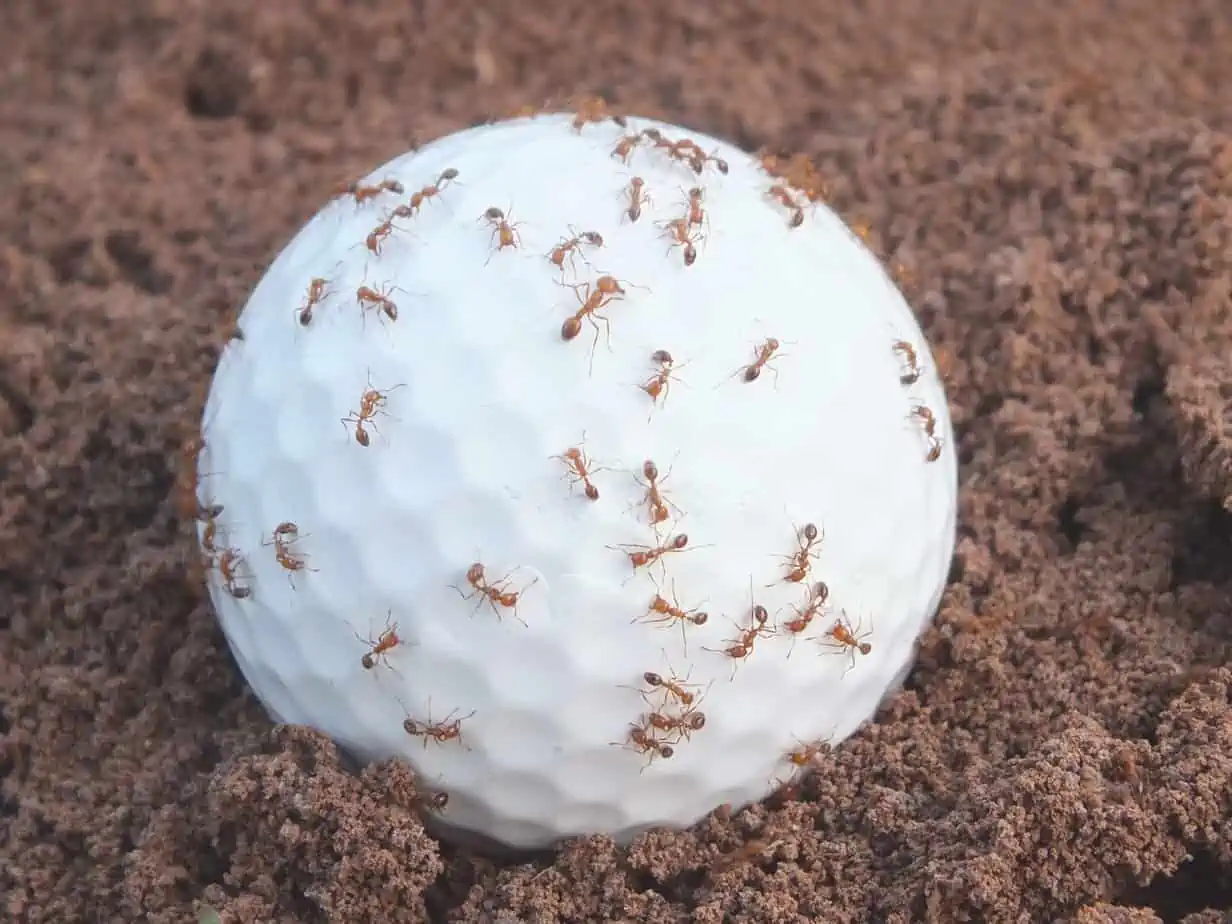Golf and Biodiversity: Help for the Ant
Anyone standing in front of an ant hill next to the fairway often wonders how many of the six-legged insects could be cavorting in this confined space. Researchers at the Universities of Würzburg and Hong Kong have also addressed a similar question about the extraordinary ant population worldwide among the approximately 30,000 estimated species. The publication of the study on the global ant population in the journal Proceedings of the National Academy of Sciences (PNAS) states that 20 quadrillion ants are believed to live on Earth worldwide. The biomass of 20 quadrillion (“a 20 with 15 zeros”) ants would thus yield twelve megatons of carbon, which would correspond to about 20 percent of the mass of the entire human race. According to the scientists, the biomass of all wild birds and mammals together is therefore lower than that of ants.
Major ant extinction
Golf courses are also bustling with ants, which are an extremely useful link in the cycle of nature. Ants make a massive difference in the truest sense of the word. According to the study results of the two universities, the industrious collectors transport around 13 tons of soil per hectare of land worldwide every year. In addition, they also spread seeds of plants and clean their environment from carrion and pests. In addition, the insects themselves provide an important food supply for other animals such as woodpeckers, swallows or capercaillie. In Germany, however, experts have been sounding the alarm about the growth of ant populations for years for various reasons. “We have been experiencing an extreme ant decline for six years,” explains Hubert Fleischmann, a volunteer ant conservationist in Bavaria.
What to do with anthills?
Golf courses have the potential to make a difference to this situation. Large unprotected areas, structurally rich areas with hedgerows, trees, roughs and biotopes serve as suitable habitats. These are found on some golf courses in particular, but are otherwise rare on this scale in general. Proper handling of highly endangered species requires expert knowledge, which, however, is rarely found on golf courses. For example, removing or relocating an ant hill on a golf course can have a massive impact on the ecosystem. “Simply moving an ant hill is not a good idea,” explains ant keeper Fleischmann.
This ant hill is often inhabited by one colony for several generations. “It’s like relocating a refugee.” It is also forgotten that the ants are an important source of food for other animal species that are also threatened – the woodpecker, for example. For this reason alone, ant wardens throughout Germany offer to inspect ant colonies, although these are often difficult to spot unless they are the clearly visible wood ants with their large mounds. https://golfsustainable.com/en/golf-before-level-2-in-species-protection-2/







